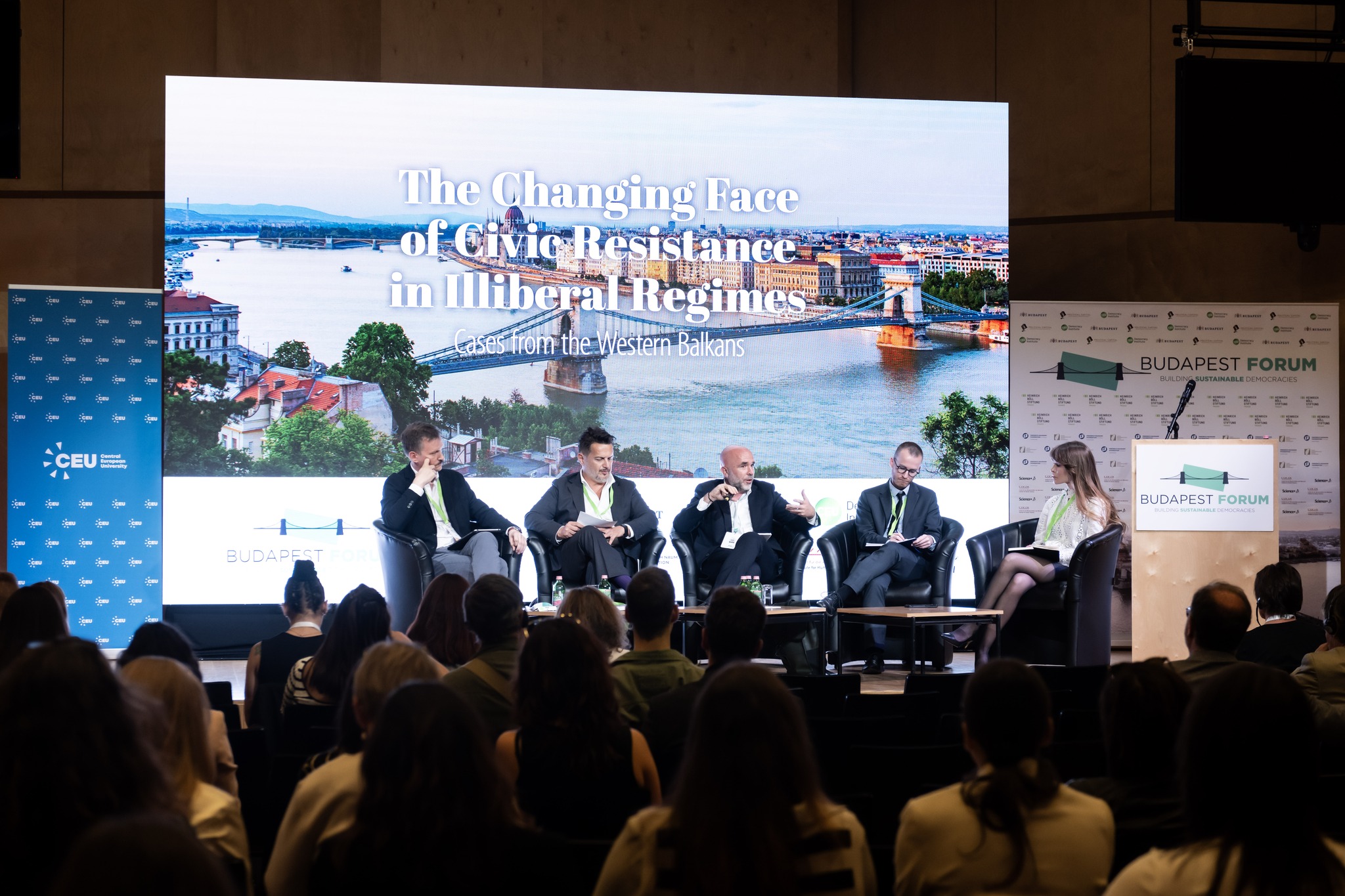The changing face of civic resistance in illiberal regimes: Cases from the Western Balkans
Panel summary: ‘The changing face of civic resistance in illiberal regimes: Cases from the Western Balkans’ at Budapest Forum 2025.
Participants
Andi Dobrushi – Director, Open Society Foundations – Western Balkans
Srđan Cvijić – President, International Advisory Committee of the Belgrade Centre for Security Policy
Vujo Ilić – Research Fellow, Assistant Director, Institute of Philosophy and Social Theory, University of Belgrade
Ferenc Németh – Western Balkans expert / PhD student, Doctoral School of International Relations and Political Science, Corvinus University
Moderator: Una Hajdari – Journalist, Politico

Main takeaways
The uniqueness of the Serbian protests
- The current wave of protests did not emerge overnight: they build on a tradition of demonstrations going back to 2016.
- Since then, Serbia’s state institutions have been systematically captured and independent bodies dismantled. As a result, the streets have become the only arena for dissent.
- A key catalyst was the collapse of a construction canopy – symbolic, as infrastructure has been the “crown jewel” of the Vučić regime. Its failure exposed the hollowness of government promises.
- Student blockades added new momentum. They began only after police attacked students during a silent vigil – a paradox where state repression fueled rather than suppressed resistance.
- The protests forged a broad social coalition spanning left to right, even resonating with segments of the ruling party’s base.
- For the first time, the regime lost control of the public agenda: protesters set the tone, while the government was forced to respond.
- Serbia, though still an EU candidate country, now exhibits practices such as political exile and house arrests, putting it ahead of other illiberal regimes like Hungary in terms of repression.
- Students built a resilient infrastructure rooted in universities, organizing through general assemblies – demonstrating they can sustain collective resistance.
Elections
- Opposition parties remain largely sidelined, constrained by the way the ruling party dominates political life.
- Students are now demanding new elections, recognizing that the government will not meet their demands on rule of law and accountability. The challenge for opposition parties is how to re-enter this dynamic.
Comparison with Hungary
- Both regimes share roots of state capture but diverge in how opposition movements operate.
- Each is currently facing its most serious crisis to date, amid stalled economic development.
- Protest movements in both countries demonstrate creativity – e.g. Serbian students walking to Strasbourg and Péter Magyar marching to meet Hungarian communities in Romania.
- Both leverage strong online presence and reclaim national symbols to broaden appeal.
- Crucially, both have learned to avoid divisive issues that could fracture their support base.
EU reactions
- Initial EU statements were strong, but follow-through has been slow.
- The EU’s conventional rhetoric on standards no longer resonates in the Balkans. Consistency and clarity of messaging are critical.
- Serbia remains strategically important, so the EU treads cautiously.
- Concerns about Russian interference loom large, as in Hungary.
Policy recommendations
- These Balkan protests are an organic expression of the democratic values the EU claims to represent. The region’s path toward re-democratization will be closely watched.
- At the same time, the uncertainty created by such movements requires careful, proactive responses.
Explore all the panel discussions from Budapest Forum 2025 here.

